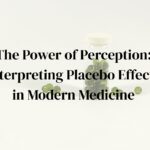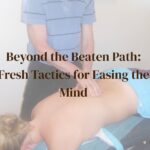
Herbal remedies have long woven their way through the tapestry of human health and well-being, offering nature’s bounty as a solution to myriad ailments. This post delves deep into the verdant world of natural medicine, sifting fact from folklore to bring forth a nuanced understanding of the true efficacy of herbal remedies. Readers will embark on a journey through history, science, and anecdotal evidence to glean insights into how these age-old treatments stand up to the rigors of modern medical scrutiny.
By exploring this post, readers will uncover the potential advantages, limitations, and applications of herbal medicine that can inform personal health choices and spark informed discussions with healthcare professionals.
Table of Contents
The Roots of Remedy: A Historical Perspective
Tracing the lineage of herbal medicine is akin to wandering through an ancient garden, where each plant tells a story rooted in the soil of human civilization. From the Ebers Papyrus, an Egyptian document dating back to 1550 BCE that catalogued over 850 herbal prescriptions, to the Sumerians, who documented well-known herbs like thyme and licorice on clay tablets as far back as 5000 years ago, herbal remedies have been a foundational aspect of healing practices around the world.
In ancient China, the legendary Emperor Shennong penned the ‘Shennong Bencao Jing,’ one of the earliest pharmacopeias, which detailed the medicinal properties of hundreds of herbs. Similarly, in India, Ayurveda, a holistic approach to health that emerged over 3,000 years ago, incorporated a rich tapestry of herbal knowledge, using plants like turmeric and holy basil to not only heal the body but to restore balance and vitality.
Greece and Rome also contributed significantly to the herbal lexicon. Hippocrates, often heralded as the ‘Father of Medicine,’ integrated herbs into his teachings, famously asserting, ‘Let food be thy medicine and medicine be thy food,’ while Dioscorides wrote ‘De Materia Medica,’ a five-volume tome that was used for over 1,500 years as a reference for medicinal plants.
In the Middle Ages, monasteries became the custodians of herbal knowledge, cultivating vast gardens of medicinal plants. Hildegard of Bingen, a Benedictine abbess, composed treatises on natural history and medicinal uses of plants that influenced herbalists for centuries to follow. The transmission of this wisdom also traces through the Arab world, where scholars like Avicenna expanded upon Greco-Roman traditions, synthesizing and enhancing them in the ‘Canon of Medicine,’ a quintessential medical text in both East and West for hundreds of years.
As the New World was explored, the repertoire of herbal medicine expanded further with the integration of indigenous plants. The Native Americans introduced European settlers to the healing properties of plants like echinacea and goldenseal, each embedded with cultural significance and therapeutic value. Thus, the intertwining of various cultures has enriched the global mosaic of herbal practices, representing a verdant legacy that has flourished alongside modern healthcare, providing a reminder of the profound connection shared between humanity and the healing power of plants.
Separating Leaves from Lore: Evaluating Scientific Evidence
Embarking upon the verdant journey of evaluating herbal remedies, we are often confronted with a tangled underbrush of ancestral wisdom and anecdotal claims. Our quest: to discern the scientifically-substantiated efficacy of these age-old treatments amid the lush folklore that surrounds them. With modern medical methodology as our compass, we embrace randomized controlled trials (RCTs) as our chosen path through this overgrown thicket. These trials, the gold standard for clinical research, illuminate the true healing abilities of herbal concoctions by meticulously comparing their effects with that of placebos or conventional medicine.
Yet, not all herbs have had the privilege of stringent RCT scrutiny, thus leaving some in the shadows of uncertainty. To bring them into the light, we turn to observational studies and longitudinal research, providing broader brushstrokes of understanding. For instance, the long-term usage of St. John’s Wort in managing mild depression has been supported by such studies, hinting at its potential, albeit with the caveat of evidence not as compelling as that collected from RCTs.
Moreover, meta-analyses and systematic reviews act as our garden shears, trimming away the widespread but unsubstantiated claims, only to reveal a clearer view of those herbal remedies backed by substantial data clumps. Cochrane Reviews, for example, frequently consolidate findings from multiple studies, offering a panoramic perspective on effectiveness and safety that helps both patients and practitioners navigate the herbal maze with greater assurance.
In our botanical odyssey, we must also be wary of herbal heroes exalted in test tubes and petri dishes. While in vitro studies provide initial insights into the bioactive components of herbs, they often fail to translate directly to the complexities of the human body. Thus, we seek further evidence, balancing our enthusiasm with a healthy dose of skepticism, ensuring that our eventual embrace of any herbal remedy is founded firmly in clinical reality, and not merely in cellular observations.
The symphony of science harmonizes best with individual narratives when case reports and small-scale pilot studies add a personal touch to the broader picture. Anecdotes of echinacea soothing a cold or turmeric reducing inflammation, once gathered systematically, contribute a valuable layer to our understanding, even as we recognize the limitations of these solo performances in the grand concert of evidence-based medicine.
Nature’s Pharmacopeia: Profiling Popular Herbal Remedies
The allure of nature’s bounty has captivated healers and the healed alike since time immemorial. As we delve into Nature’s Pharmacopeia, we uncover a tapestry of plants, each with a legacy as rich as the soils that nourish them. Let us embark on an exploration of some of the most prominent herbal remedies that persist in modern healthcare, not merely as vestiges of tradition but as agents of wellbeing in their own right.
Echinacea – Cloaked in the purple majesty of its flowers, Echinacea is more than just a feast for the eyes. Once wielded by the Great Plains indigenous tribes as a catch-all remedy, modern research touts its potential to invigorate our immune system, offering a shield against the common cold and respiratory infections. However, its effectiveness is as much debated as it is celebrated, leading to an ongoing dance between anecdote and evidence.
Gingko Biloba – With leaves that whisper tales from ancient times, Ginkgo biloba stands as a living fossil, unyielding to the passage of millennia. Believers in its power claim it sharpens the mind and dispels the fog of cognitive decline. Yet, despite numerous studies, the scientific community remains locked in a waltz of contradiction and confirmation concerning gingko’s prowess in enhancing memory and attention.
Turmeric – Bathed in the golden glow of curcumin, its active component, turmeric is a cornerstone of Ayurvedic medicine. It has gained global recognition for its anti-inflammatory properties. It’s not merely a spice to add flavor to our dishes, but a potential combatant against inflammatory disorders. However, the journey to isolate its benefits and incorporate them reliably into treatments continues.
St. John’s Wort – Amidst the cheer of its yellow blossoms lies a balm for troubled spirits. St. John’s Wort is often seen as nature’s answer to melancholy, heralded for its antidepressant qualities. While some clinical trials support its use in mild to moderate depression, others suggest caution, citing variability in active ingredients and potential interactions with conventional pharmaceuticals.
Valerian Root – In the velvety darkness of its root hides a sedative that has soothed anxious minds since the time of ancient Greece and Rome. Valerian is often sought after as a herbal alternative to pharmaceutical sleep aids. Its efficacy in treating insomnia remains a point of intrigue, compelling both herbalists and scientists to further unravel its secrets.
In this verdant landscape of herbal remedies, we must tread thoughtfully, balancing reverence for nature’s gifts with the rigor of scientific scrutiny. The path to integrating these remedies into our lives is neither straight nor narrow, but meanders through the gardens of empirical evidence and individual experience, requiring a discerning eye to identify the true blooms of healing.
Interactions and Implications: Herbal Remedies in Modern Medicine
The world of modern healthcare often paints with a palette of pills and procedures, yet we must not overlook the verdant hues contributed by herbal medicine. In this kaleidoscope of healing, it’s imperative to explore the symbiosis between traditional herbal remedies and contemporary medical practices. The implications of such an alliance extend far beyond a mere nod to bygone eras; they present a fusion of history’s wisdom with today’s scientific rigor.
Herbs like St. John’s Wort, once used by ancient healers to drive away evil spirits, now face clinical scrutiny and emerge as a potent ally against depression. But combining such herbs with pharmaceuticals demands caution; the same St. John’s Wort can diminish the effectiveness of birth control pills and other medications. It’s a potent reminder that these natural agents participate in the body’s complex biochemical dance and can both lead or disrupt the rhythm.
The scalability of Echinacea as a widely-endorsed immune booster serves as a testament to herbal medicine’s stature in contemporary circles. The impacts here range from stimulating economic growth in agriculture to crafting policy on supplements. This purple coneflower that dots the American prairies has spurred studies and debates, highlighting the need for rigorous evaluation before we wed modern medicine with ancient cures.
Meanwhile, the integration of turmeric in oncology, armed with its active compound curcumin, captures imagination and scientific interest alike. Its anti-inflammatory prowess is proposed to complement chemotherapy, though skepticism remains whether the earthy spice can indeed claim a spot in the oncologist’s armamentarium. As tales of ‘golden lattes’ intermingle with clinical trials, the bridge between alternative and traditional treatments bears the weight of proof and promise.
At the patient level, this intersection of herbal remedies and modern medicine becomes deeply personal. It asks for a nuanced understanding of each individual’s biology, the responsibility of healthcare providers to educate on potential interactions, and perhaps most importantly, a humbling acknowledgment that health is both a science and an art, blending quantifiable outcomes with the qualitative richness of human experience.
Personal Petals: Tailoring Herbal Treatments to Your Health
Embarking on a journey with herbal medicine isn’t a one-herb-fits-all endeavor. Embracing the uniqueness of each individual, Personal Petals is about customizing herbal treatments to align with your personal health profile. It’s about understanding that just as petals differ from one flower to another, so too do the needs and responses of our bodies to various herbal remedies.
To begin with, consider your body’s own idiosyncrasies. This involves an honest evaluation of your health conditions, allergies, and any medications you’re currently taking. For instance, if you’re on blood thinners, herbs like Ginkgo biloba can cause complications. Consulting with a healthcare professional or a clinical herbalist can illuminate the path forward, ensuring that the herbal choices you make complement your health rather than compromise it.
Next, let’s delve into the art of listening to your body’s responses. Starting with low doses of an herbal remedy allows you to observe how your body reacts. Do you notice any improvements, or do adverse reactions occur? It’s a dialogue between you and the subtle whispers of your wellbeing, a personal experiment to reach the optimal state of harmony.
Equally critical is understanding the source and quality of the herbs you choose. Organic and ethically harvested herbs generally carry a higher potency and reduced risk of contaminants. Researching and sourcing your herbs from reputable suppliers can make a significant difference in their efficacy and safety, underlining the mantra that quality trumps quantity in the realm of herbal medicine.
The seasonal aspect of herbal treatment also plays a pivotal role. Traditional practices often recommend aligning herbal remedies with seasonal changes, as the body’s needs can shift with the climate. For instance, using warming ginger during cold months, while opting for cooling peppermint in the summertime, aligns your treatment with natural cycles, potentially enhancing efficacy.
Finally, the personalized herbal journey should be marked with patience and persistence. While the allure of quick fixes is strong, deep and meaningful change often requires time. Documenting your journey and making gradual adjustments based on your reflections enables the craft of a herbal regime that resonates perfectly with your personal health narrative, allowing the full bloom of Personal Petals to manifest.
Conclusion
In conclusion, our exploration has traversed the fertile ground of herbal medicine, unearthing insights about its place and potency in healthcare today. We’ve learned that while some herbal remedies hold promising benefits, it is essential to approach them with the same critical eye we would any treatment. May this investigation into the verdant world of natural medicine empower readers to make informed decisions about their health, harmonizing the wisdom of nature with the innovations of modern medical science.



